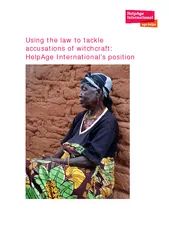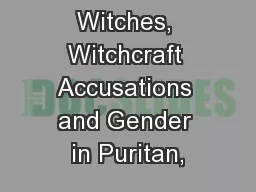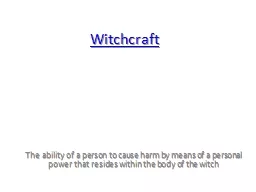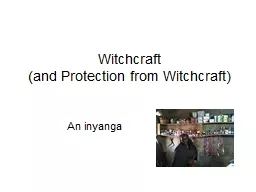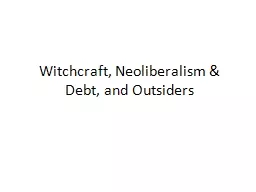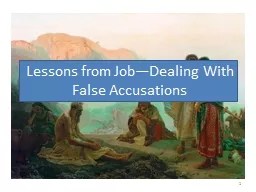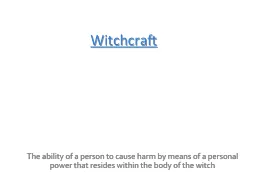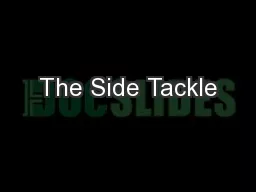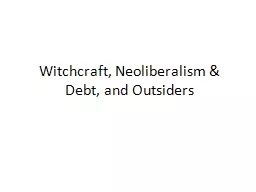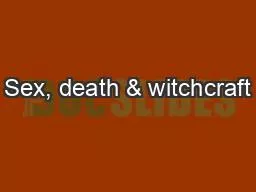PDF-Using the law to tackle accusations of witchcraft Help
Author : pamella-moone | Published Date : 2015-04-22
Acknowledgements We would like to thank all of the lawy ers from Allen and Overy Dechert and Ogilvy Renault who dedicated so much of their time on a pro bono basis
Presentation Embed Code
Download Presentation
Download Presentation The PPT/PDF document "Using the law to tackle accusations of w..." is the property of its rightful owner. Permission is granted to download and print the materials on this website for personal, non-commercial use only, and to display it on your personal computer provided you do not modify the materials and that you retain all copyright notices contained in the materials. By downloading content from our website, you accept the terms of this agreement.
Using the law to tackle accusations of witchcraft Help: Transcript
Download Rules Of Document
"Using the law to tackle accusations of witchcraft Help"The content belongs to its owner. You may download and print it for personal use, without modification, and keep all copyright notices. By downloading, you agree to these terms.
Related Documents

